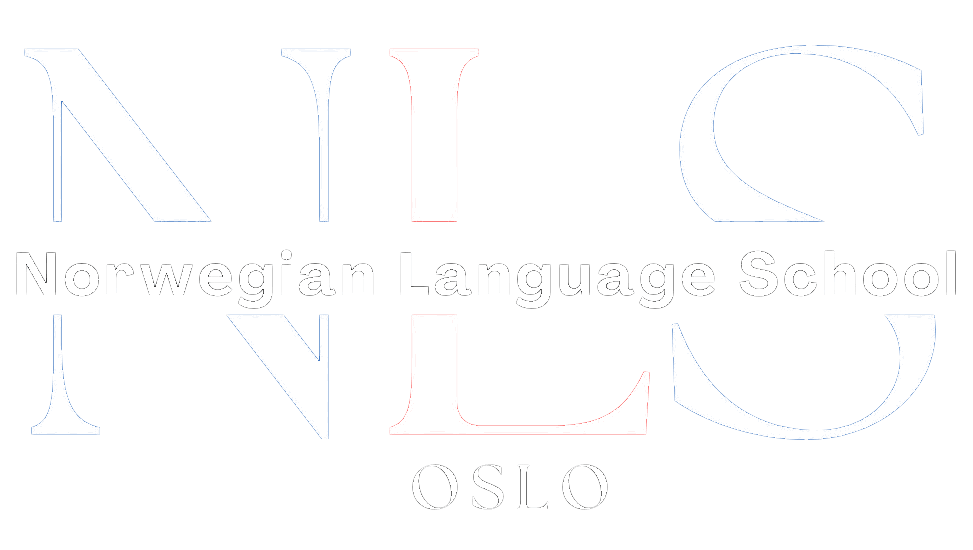

Expanding Your Vocabulary: 10 Useful Norwegian Action Verbs
Action verbs are an essential part of any language, including Norwegian. They are words that describe an action or a state of being. Learning action verbs is crucial when learning a new language because they allow you to express yourself and communicate effectively. Without action verbs, your sentences would lack depth and clarity.
In Norwegian, action verbs are used in various tenses and forms to convey different meanings. They can be used to describe physical actions, mental processes, emotions, and more. By learning Norwegian action verbs, you will be able to express yourself more accurately and fluently in both spoken and written communication.
Table of Contents
ToggleKey Takeaways
- Norwegian action verbs are important for effective communication in the language.
- Expanding your vocabulary with Norwegian action verbs can help you express yourself better.
- Useful Norwegian action verbs for everyday use include “å spise” (to eat) and “å drikke” (to drink).
- To use Norwegian action verbs in sentences, you need to conjugate them correctly.
- Tips for memorizing Norwegian action verbs include using flashcards and practicing with native speakers.
The Importance of Expanding Your Vocabulary
Expanding your vocabulary is essential for effective communication in any language. Having a wide range of words at your disposal allows you to express yourself more precisely and with greater nuance. It also helps you understand others better and comprehend written and spoken texts more easily.
A broad vocabulary enhances your communication skills by enabling you to choose the most appropriate words for a given context. It allows you to convey your thoughts and ideas more accurately, making your message clearer and more engaging. Additionally, a varied vocabulary helps you avoid repetition, making your speech or writing more interesting and engaging for your audience.
10 Useful Norwegian Action Verbs for Everyday Use
1. Gå (to go): Jeg går på skolen hver dag. (I go to school every day.)
2. Snakke (to speak): Kan du snakke norsk? (Can you speak Norwegian?)
3. Spise (to eat): Jeg spiser frokost klokken åtte. (I eat breakfast at eight o’clock.)
4. Lese (to read): Hun leser en bok på biblioteket. (She is reading a book at the library.)
5. Skrive (to write): Vi skriver en rapport om klimaendringer. (We are writing a report about climate change.)
6. Se (to see): Jeg ser en film på kino i kveld. (I am watching a movie at the cinema tonight.)
7. Høre (to hear): Kan du høre musikken? (Can you hear the music?)
8. Jobbe (to work): Han jobber på kontoret. (He works in the office.)
9. Lære (to learn): Jeg lærer norsk på skolen. (I am learning Norwegian at school.)
10. Reise (to travel): Vi skal reise til Norge neste uke. (We are going to travel to Norway next week.)
How to Use Norwegian Action Verbs in Sentences
In Norwegian, the basic sentence structure follows a subject-verb-object pattern, similar to English. However, there are some differences in word order and verb conjugation.
When using action verbs in sentences, it is important to conjugate the verb according to the subject and tense of the sentence. Norwegian verbs have different forms for different subjects and tenses, so it is crucial to use the correct form.
For example:
– Present tense: Jeg spiser frokost hver dag. (I eat breakfast every day.)
– Past tense: Han spiste middag i går. (He ate dinner yesterday.)
– Future tense: Vi skal spise lunsj sammen i morgen. (We will eat lunch together tomorrow.)
It is also important to pay attention to word order in Norwegian sentences. The verb usually comes after the subject, but it can also come before the subject in certain cases, such as questions or commands.
Tips for Memorizing Norwegian Action Verbs
Memorizing new vocabulary can be challenging, but with the right techniques, it can become easier and more effective.
One technique is to create associations or connections between the new words and something familiar to you. For example, you can associate the Norwegian word for “to eat” (spise) with the English word “spicy” because spicy food is often eaten.
Another technique is to use flashcards or mnemonic devices to help you remember the new words. Write the Norwegian word on one side of the flashcard and the English translation on the other side. Review the flashcards regularly and test yourself to reinforce your memory.
Practice and repetition are also crucial for memorizing new vocabulary. Use the new words in sentences, write them down, and say them out loud to help solidify them in your memory.
Common Mistakes to Avoid When Using Norwegian Action Verbs

When using Norwegian action verbs, there are some common mistakes that learners often make. Here are a few examples:
1. Forgetting to conjugate the verb: In Norwegian, verbs must be conjugated according to the subject and tense of the sentence. Forgetting to do so can lead to grammatical errors. For example, saying “Jeg spiser frokost” instead of “Jeg spiserer frokost” would be incorrect.
2. Using the wrong verb form: Norwegian verbs have different forms for different tenses and subjects. Using the wrong form can lead to confusion or misunderstanding. For example, saying “Han spiser middag i går” instead of “Han spiste middag i går” would be incorrect.
3. Incorrect word order: Word order is important in Norwegian sentences, and using the wrong order can change the meaning of a sentence or make it sound unnatural. For example, saying “Jeg spiser frokost hver dag” instead of “Jeg hver dag spiser frokost” would be incorrect.
To avoid these mistakes, it is important to practice using action verbs in context and pay attention to verb conjugation and word order in sentences.
Using Norwegian Action Verbs in Writing and Speaking
Using action verbs in writing and speaking can greatly enhance your communication skills and make your language more engaging and dynamic.
In writing, using action verbs can help you create vivid descriptions and convey a sense of action and movement. Instead of using passive verbs or weak adjectives, using strong action verbs can bring your writing to life. For example, instead of saying “The car was driven fast,” you can say “The car raced down the street.”
In speaking, using action verbs can help you express yourself more clearly and effectively. They can help you convey your thoughts and ideas with greater precision and impact. Instead of using vague or generic words, using specific action verbs can make your speech more engaging and memorable. For example, instead of saying “I did some work,” you can say “I completed a project.”
Building Your Vocabulary with Norwegian Action Verbs
Building your vocabulary with Norwegian action verbs requires practice and exposure to the language in various contexts.
One technique for expanding your vocabulary is to read extensively in Norwegian. Read books, newspapers, magazines, and online articles to expose yourself to different words and phrases. Look up unfamiliar words and make note of them for future reference.
Another technique is to watch movies, TV shows, or videos in Norwegian. Pay attention to the dialogue and try to identify new words or phrases. You can also use subtitles in Norwegian to help you understand the context and meaning of the words.
Additionally, practicing speaking with native speakers or language exchange partners can help you learn new words and phrases. Engage in conversations and ask for clarification or explanations when you encounter unfamiliar words.
Resources for Learning More Norwegian Action Verbs
There are several resources available for learning Norwegian action verbs:
1. Language learning apps: Apps like Duolingo, Babbel, and Memrise offer courses in Norwegian that include vocabulary lessons and exercises.
2. Online courses: Websites like NorwegianClass101 and FutureLearn offer online courses in Norwegian that cover various aspects of the language, including vocabulary.
3. Language exchange platforms: Websites like Tandem and HelloTalk connect language learners with native speakers for language exchange. You can practice speaking Norwegian and learn new words and phrases from native speakers.
4. Language learning websites: Websites like Transparent Language and FluentU offer resources for learning Norwegian, including vocabulary lists and exercises.
When using these resources, it is important to be consistent and practice regularly. Set aside dedicated time each day or week to study and review the new words you have learned.
Putting Your Norwegian Action Verbs into Practice
To truly master Norwegian action verbs, it is important to put them into practice in your everyday life.
One way to do this is to use the new words in sentences or conversations with native speakers. Challenge yourself to incorporate the action verbs into your speech or writing whenever possible. This will help you become more comfortable using the words and reinforce your memory of them.
Another way to practice is to write short stories or essays using the action verbs. This will allow you to use the words in context and develop your writing skills at the same time.
Additionally, you can create flashcards or word lists with the action verbs and review them regularly. Test yourself by trying to recall the meaning of each word without looking at the translation.
By actively using and practicing Norwegian action verbs, you will become more confident in your language skills and be able to communicate more effectively in Norwegian.
If you’re looking to expand your vocabulary in Norwegian, you might also be interested in learning Mandarin for environmental discussions. Check out this article on “Mandarin for the Environmentalist: Discussing Sustainability” to learn key vocabulary and phrases related to sustainability and the environment. Whether you’re passionate about protecting the planet or simply want to broaden your language skills, this article will provide you with useful Mandarin words and expressions. Read more

Norwegian A1-A2
Course Overview The Norwegian A1-A2 course is an online program focused on teaching essential Norwegian grammar and vocabulary. It includes a variety of materials and topics, with opportunities to interact with a Norwegian teacher entirely online. Curriculum Highlights The course covers key areas such as grammar and vocabulary and topics such as family, daily life, education, work, traditions, and leisure activities. Who Should Enroll? This course is perfect for beginners or those at the A1 or A2 levels who want to improve their Norwegian skills. What You Get Access to the full Norwegian A1-A2 course. A monthly 1-hour online conversation with a teacher. Many written and oral assignments. Comprehensive information on Norwegian grammar, Norwegian vocabulary and how to use them, important sentence structures, etc. Tips on additional resources to further enhance your Norwegian learning.
0 students enrolled
Last updated Dec 10th, 2024
If you want to learn Norwegian, you can register for classes here. We look forward to hearing from you and helping you become fluent in Norwegian.





